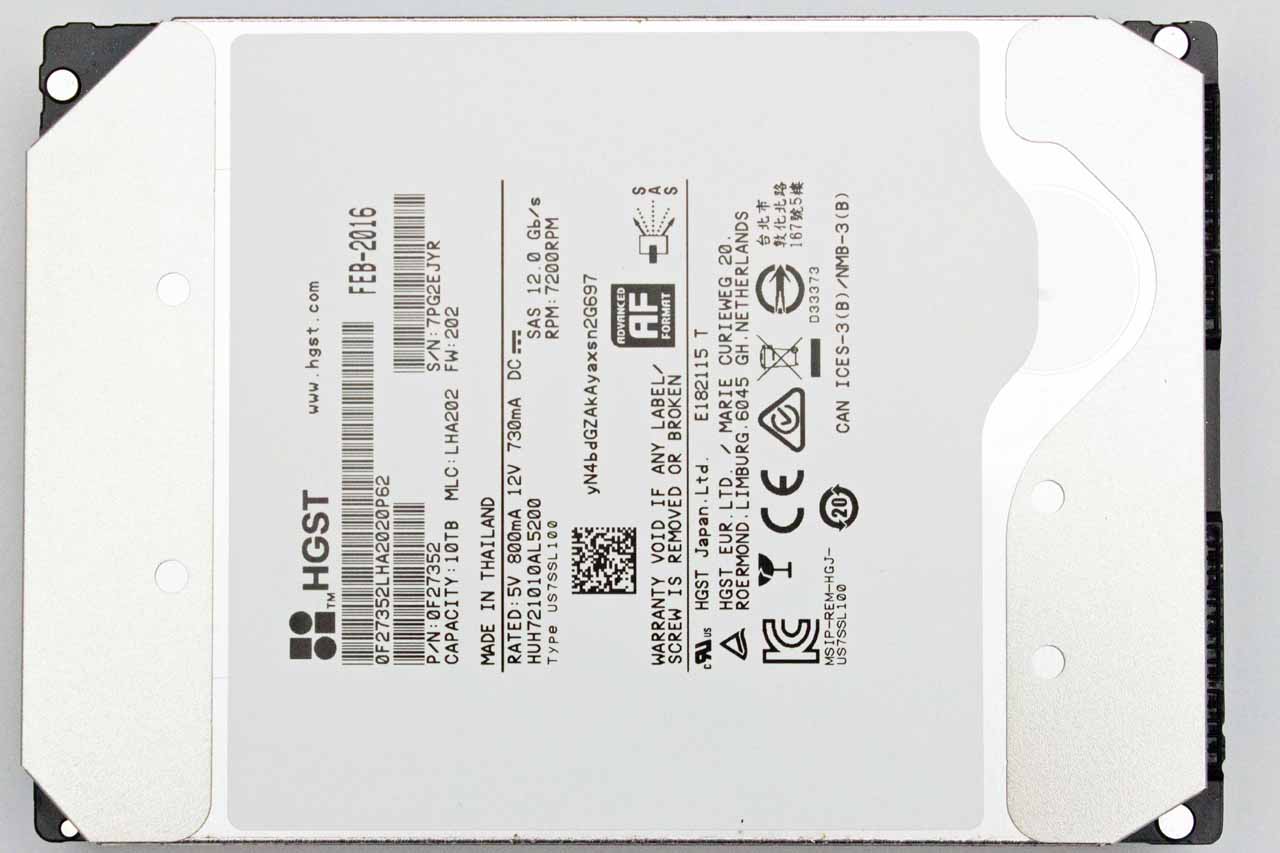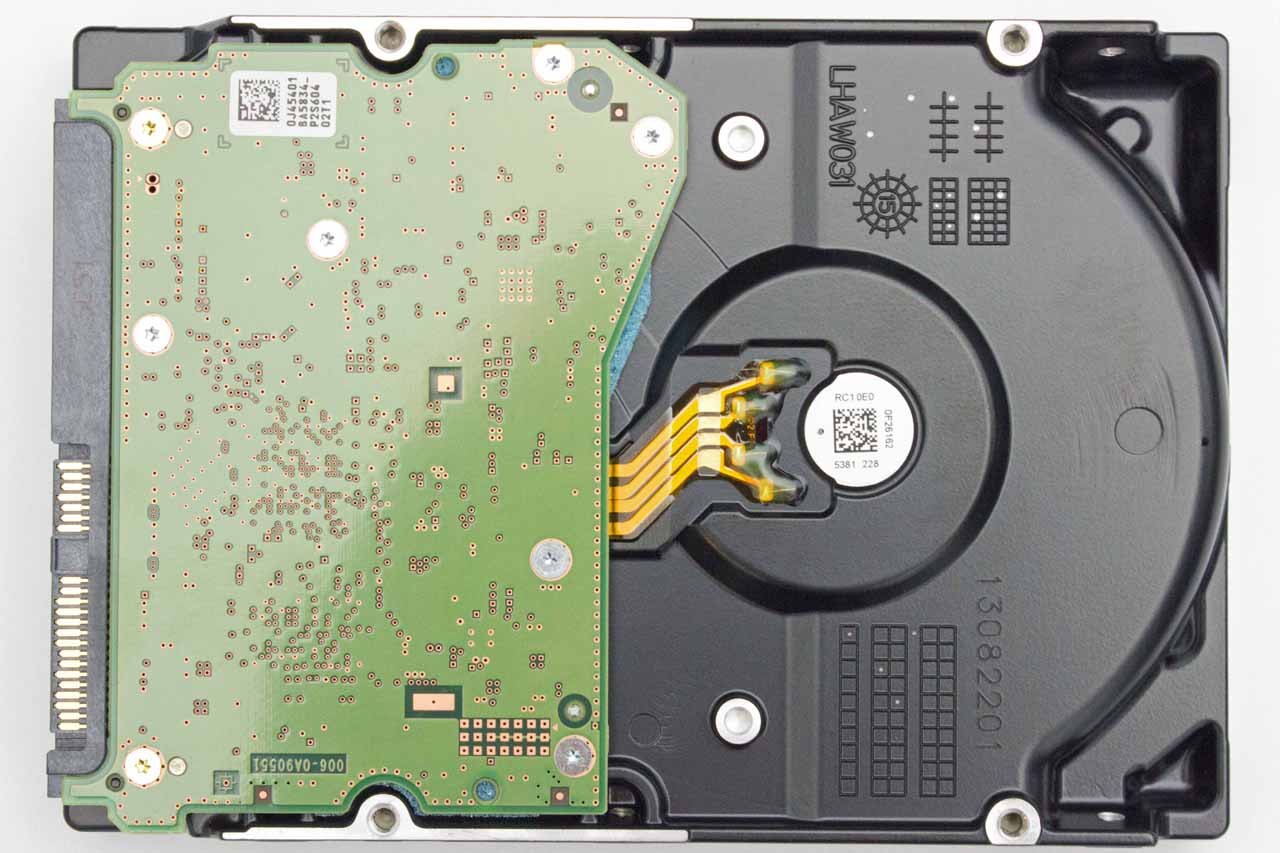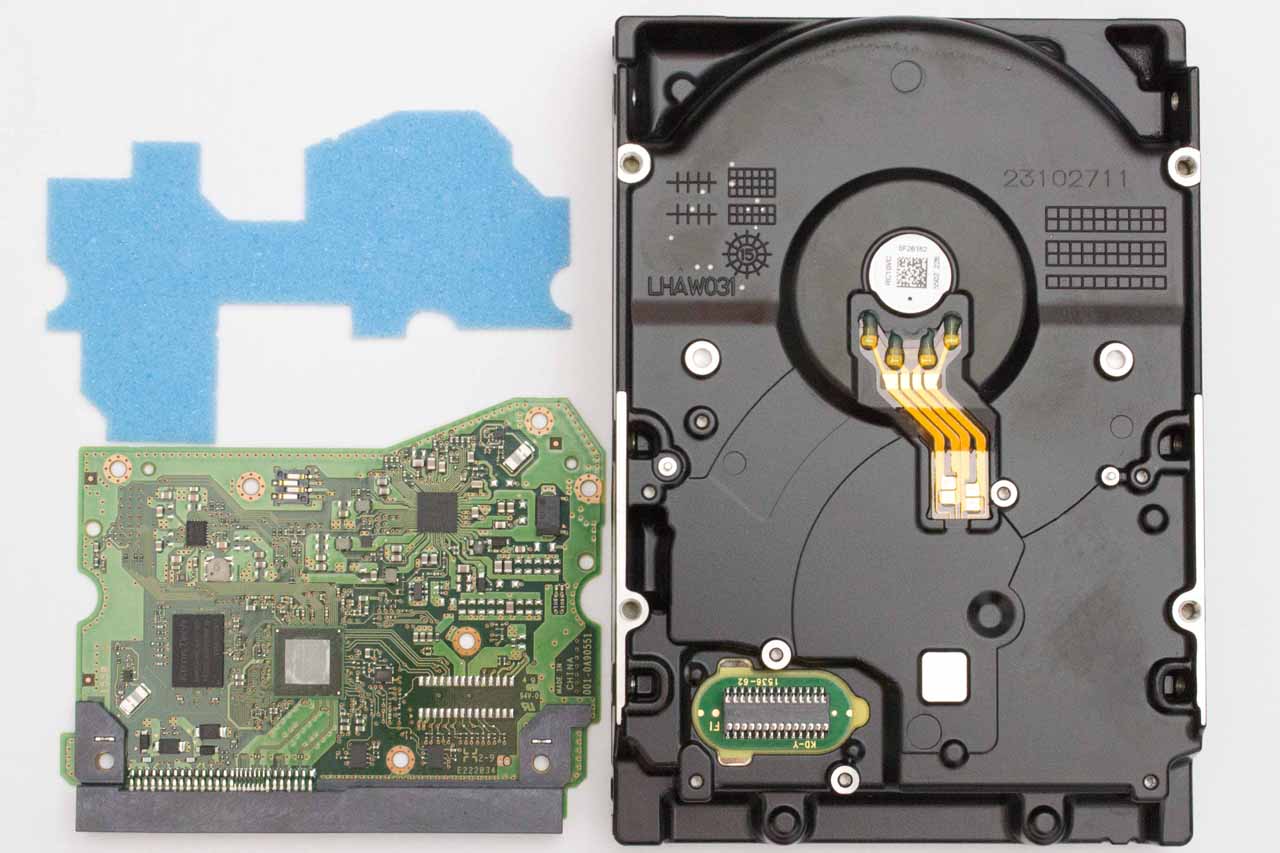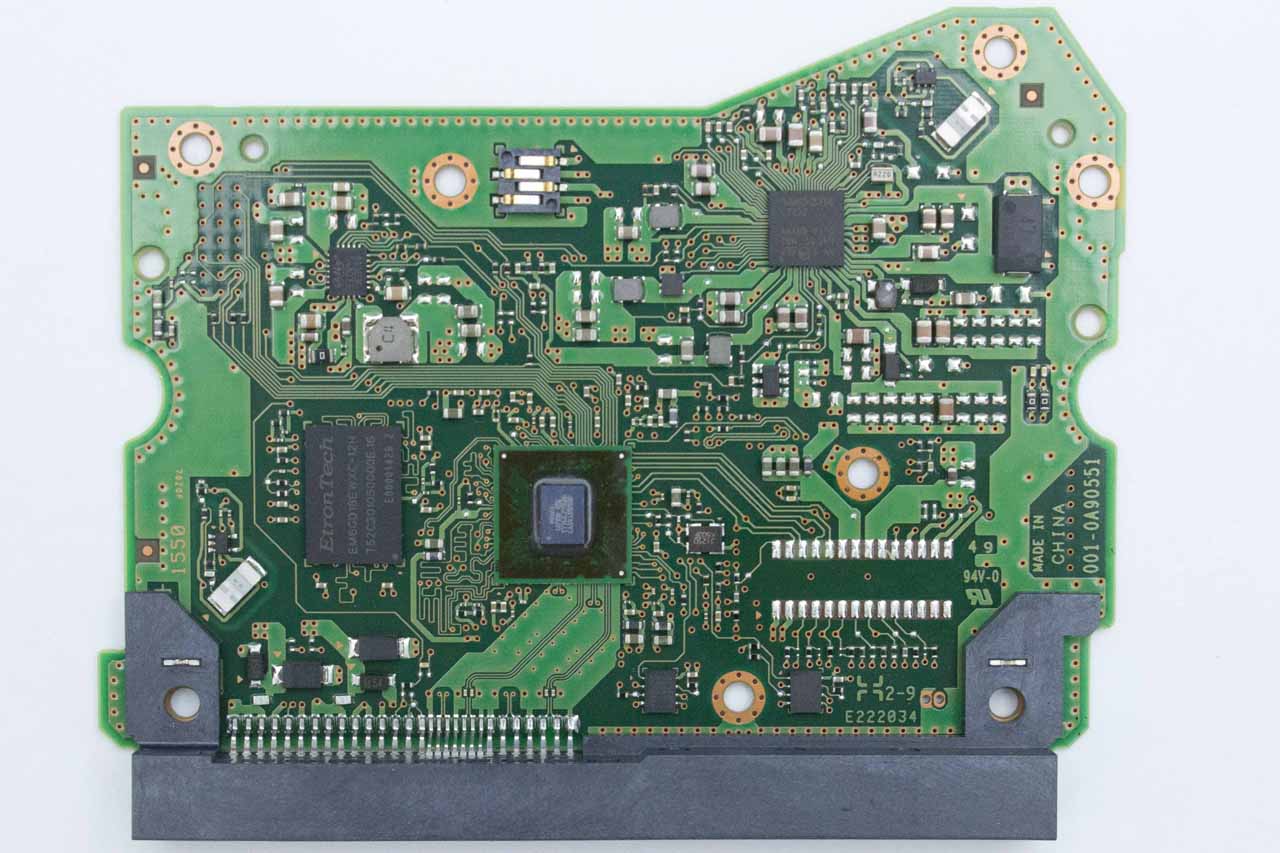Big HDD Showdown: Seagate 10TB vs. HGST Ultrastar He10 vs. WD Gold 8TB
HGST Ultrastar He10 10TB HDD
Why you can trust Tom's Hardware
The HGST Ultrastar He10 features up to 10 TB of capacity and the third generation of the HelioSeal architecture, which is the company's proprietary sealing method. The He10 comes in both 12 Gb/s SAS and 6 Gb/s SATA flavors and includes an 8TB option that supplants the previous-generation He8. HGST continues to employ PMR and uses media caching technology to boost random write performance.
| He10 | Ultrastar He10 10TB | Ultrastar He8 8TB |
|---|---|---|
| Interface | SAS / SATA | SAS / SATA |
| RPM | 7,200 RPM | 7,200 RPM |
| Sustained Transfer Rate | 249MB/s | 225MB/s |
| Average Latency | 4.16ms | 4.16 |
| Operating Power | 6.8W (SATA) / 9.5 (SAS) | 6.5W (SATA) |
| Idle Power | 5.0W (SATA) / 5.8 (SAS) | 4.5W (SATA) |
| Cache Buffer | 256 MB | 256 MB |
| Workload Rating | 550 TB/Year | 550 TB/year |
| MTBF (Million Hours) | 2.5 | 2.5 |
| UBER Rating | 1 in 10^15 | 1 in 10^15 |
| Warranty | 5 Years | 5 Years |
| Weight | 660g | 660g |
The 7,200-RPM drive comes with 7 platters and 14 heads for the 10TB model in an implementation that the company refers to as the "7Stac architecture." The 8TB model features 7 platters with 12 heads. The 10TB model has a substantially higher sustained data transfer rate than the 8TB model. HGST rated the drive for 600,000 load/unload cycles, which is a key metric for heavy-use environments. The He10 features a 2.5 million hour MTBF, which is the new standard for helium drives, and a five-year warranty. The drive comes with Instant Secure Erase (ISE) and Self-Encrypting Drive (SED) options and features an 816Gbits/in2 areal density.
The 10TB 12Gb/s SAS models consume more power than their 6Gb/s SATA counterparts do, but that is a common occurrence for the dual-ported SAS connection.
HGST led the market with its new media caching technology, which debuted in its 10K and 15K HDDs, and then moved the technology into its high-capacity offerings. Seagate followed with its own technique, which varies architecturally but has the same end result.
HDDs use DRAM to cache incoming data, but DRAM is volatile, which means that during an unsafe power loss all of the data in DRAM will be lost. Volatility limits the amount of caching that the vendors can do safely, but HGST's media caching technology provides power-safe random write caching by persisting data on reserved sections of the platter.
HGST created small caching zones on the HDD, which boosts performance by limiting head movements during write operations. The HDD replicates the data held in the DRAM buffer to these zones, which provides the HDD with a copy of all the data in the cache in the event of an unsafe power loss. The process allows the HDD to conduct more efficient write combining, which is the concatenation of multiple small random writes, before passing the data down to the platter for final storage. This technique greatly enhances the HDDs random write performance and provides one of the largest jumps in mixed workloads in recent history. Unlike some caching techniques, the cache never becomes full, so the drive can continue to offer the higher level of performance for an unlimited amount of time. We have a more thorough explanation of HGSTs media caching technique here.
HGST was the first vendor to ship helium drives, and as such, it continues to lead the market in volume shipped with over 4.25 million units as of December 2015. The number of helium units compared to the number of air-based HDDs remains small, but the high-density focus of the helium drives means that they accounted for over 25 percent of all exabytes shipped last year (according to HGST data).




The HE10's sealed case leaves most of the internals to the imagination, though we spot the key components when we remove the PCB from the body of the drive. A blue foam pad reduces vibration between the two components, while a small thermal pad over the controller wicks heat into the body of the drive, which acts as a large heatsink. The He10 utilizes standard surface mount-points to connect with the PCB, while the previous generation He8 series employed pins to connect the two components.
Current page: HGST Ultrastar He10 10TB HDD
Prev Page To Helium And Beyond Next Page Seagate Enterprise Capacity 10TB HDDGet Tom's Hardware's best news and in-depth reviews, straight to your inbox.

Paul Alcorn is the Editor-in-Chief for Tom's Hardware US. He also writes news and reviews on CPUs, storage, and enterprise hardware.
-
Bret_Schumacher You should have compared it to the 10TB gold which had "supposedly" higher read/write rates comparable to seagate and hgstReply -
Paul Alcorn Reply18389500 said:You should have compared it to the 10TB gold which had "supposedly" higher read/write rates comparable to seagate and hgst
I agree. The 10TB Gold was only announced two days ago. We inquired with WD, but samples are not ready yet.
-
AndrewJacksonZA I know that your review uses the pricing that you have at hand, but as I'm reading the article, your ads are displaying prices as follows:Reply
HGST ULTRASTAR HE10 - $506 on Amazon
SEAGATE ENTERPRISE CAPACITY 10TB - $589 on Amazon
WD GOLD 8TB - $600 on Newegg
The HE10 in the review is taken as the most expensive drive when it's actually the cheapest. Would you consider revising your pros and cons for each drive's cost?
Thank you -
Paul Alcorn Reply18389599 said:I know that your review uses the pricing that you have at hand, but as I'm reading the article, your ads are displaying prices as follows:
HGST ULTRASTAR HE10 - $506 on Amazon
SEAGATE ENTERPRISE CAPACITY 10TB - $589 on Amazon
WD GOLD 8TB - $600 on Newegg
The HE10 in the review is taken as the most expensive drive when it's actually the cheapest. Would you consider revising your pros and cons for each drive's cost?
Thank you
Prices fluctuate, and it varies between retailers. Usually we do not provide a graph with low, average, and high values, but I added it due to the big price variation between retailers. It isn't a perfect system, but retail pricing is our only resource.
The $500 for the HGST He10 is noted in the 'low' category, but the drive is still retailing at CDW for $855.
-
3ogdy Reply18389819 said:No Seagate for me. Their drives are notoriously unreliable and always fail on us.
THERE.YOU.GO. Once again another one just like me...
Seagate hard drives have proven to be extremely unreliable for me too. This company is an absolute nightmare. I have quite a few 7200.12 500GB and 7200.14 2TB Barracudas that simply stopped working. Some of them, in a very convenient way, right after the 2yr warranty - even though that doesn't cover data recovery, of course.
Once my last 7200.14 2TB Barracuda went belly up...I had to cough up over $1000 to ship that POS to the Netherlands and have my data sent back to me on an external Seagate drive. VERY poor quality products from this company. I'm terrified at the thought of using anything from Seagate to store my data on. I lost countless projects, personal data and things I needed, but Seagate isn't gonna get a copulating cent from me anymore. I'm not touching anything coming from them and they can easily rest assured none of my clients EVER will.
Another detail I'd mention is this: I was on the phone with a Seagate representative and I told them how everything happened (well, basically my partitions were not there in Windows, the drive didn't show up under Device Management...). I'm asked for a serial number and then I'm told: You've just lost your warranty on your Seagate product. (it was legally under warranty that I could have claimed through the shop I got the drive from)
EXCUSE ME?
Very bad customer experience - building HDDs to get people to call on you for data recovery and pay over 15x the price of your POS product in order to get their data back. Your business model is not focused on providing reliable storage systems ( HDDs ) - you're not an HDD manufacturer at heart - you're a data recovery company.
WELL DONE WE'RE DONE, Seagate.
Also, shall I mention there's a class action suit being prepared against Sh*tgate at the EU level?
HGST (WD subsidiary) has proven much more reliable throughout the years and they also provide a 5 years warranty (data recovery not included, of course).
P.S. NEVER provide your HDD's serial number to Seagate on the phone.
The lesson I'm teaching everyone I can around me is NEVER EVER trust your data to Seagate. NEVER use Seagate products as they don't stand by them and are only interested in making your pockets lighter. Even friends who weren't aware about this company now know what to avoid in their systems.
Whenever you have to choose storage - consider SSDs first and if capacities don't fit the budget, pick something more reliable from either HGST, WD...I can't really speak for Toshiba drives but I doubt they're as problematic as Seagate's I rememebr reading Backblaze's reliability reports and thinking : It all makes sense to me now. People said they hadn't tested Seagate drives properly and that their technique was flawed, but they were right. -
RedJaron Paul, any chance you or Chris R might review a basic consumer spindle drive soon? I know they're not the "sexy" thing right now with new SSDs and high-capacity enterprise storage getting released. But considering most consumer builds still include a TB or two of spindle storage, I'd be interested to see if there have been any significant advances in the last 3 - 5 years. In particular, the WD Blue 1TB is 7200 rpm while the 2TB model is 5400 rpm. Is 5400 still a curse word in today's spindle drives?Reply -
Paul Alcorn Reply18390300 said:Paul, any chance you or Chris R might review a basic consumer spindle drive soon? I know they're not the "sexy" thing right now with new SSDs and high-capacity enterprise storage getting released. But considering most consumer builds still include a TB or two of spindle storage, I'd be interested to see if there have been any significant advances in the last 3 - 5 years. In particular, the WD Blue 1TB is 7200 rpm while the 2TB model is 5400 rpm. Is 5400 still a curse word in today's spindle drives?
There is actually something in the pipeline right now, so we should have something for you soon(ish). I am not sure about the test pool yet, but those are good suggestions. :)
-
logainofhades I really want 2x8tb drives for a Raid 1 setup, but the cost is still too high. :(Reply